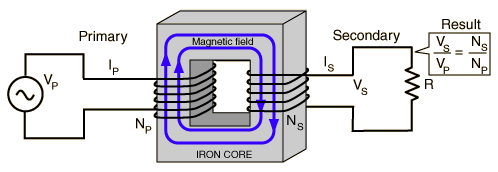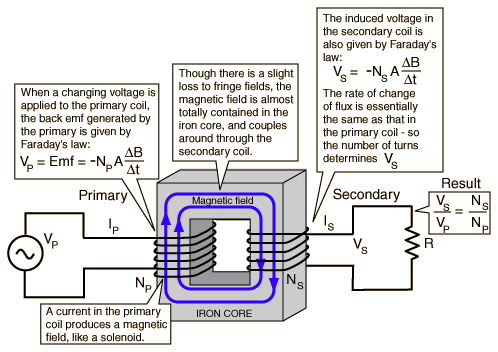TransformerA transformer makes use of Faraday's law and the ferromagnetic properties of an iron core to efficiently raise or lower AC voltages. It of course cannot increase power so that if the voltage is raised, the current is proportionally lowered and vice versa.
 |
|
| |
|
Transformer and Faraday's Law
| Faraday's law | Solenoid magnetic field | Calculation |
|
|
| |
|
Ideal Transformer Calculation
| More realistic treatment: | Numerical example |
| Calculation with primary losses |
Notes: For this exploratory calculation, you may enter data for any parameter except the power. Then click on the active text for the parameter you wish to calculate; values will not be forced to be consistent until you do. For primary calculations, the voltage and number of turns in the secondary will be considered to be established and vice versa. Default values will be entered for unspecified parameters, but all values except the power may be changed.


0 Comments to " "
Leave a Reply